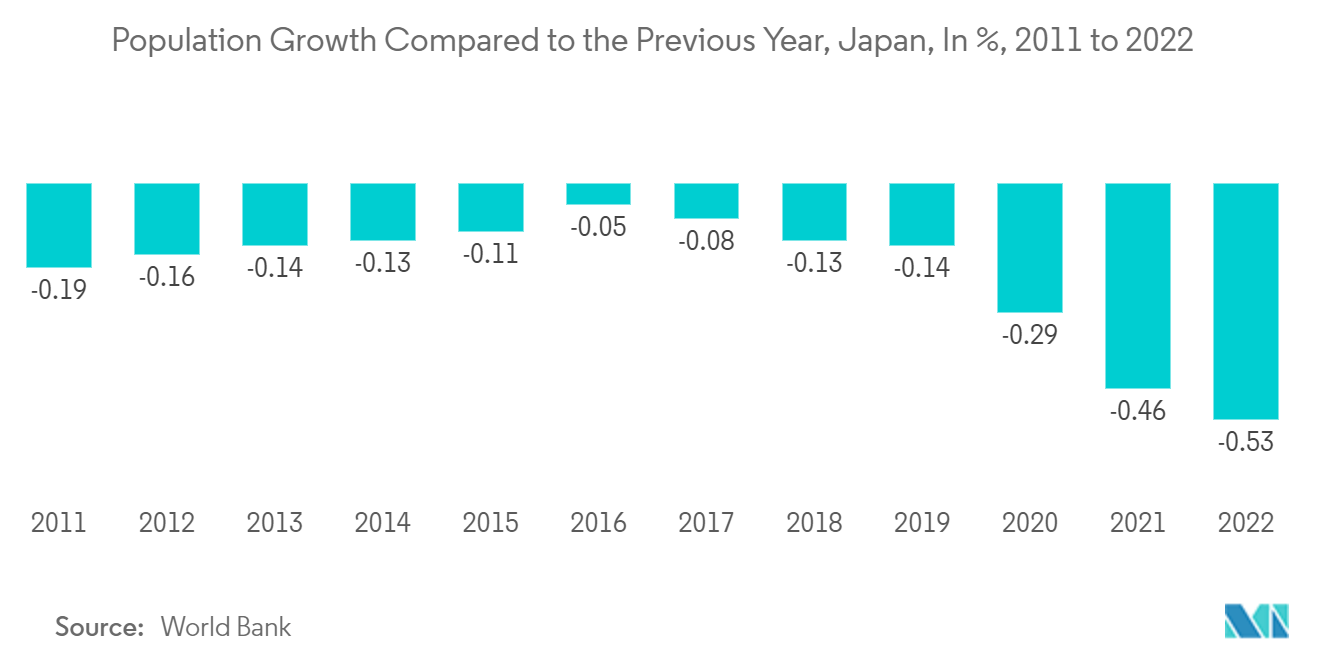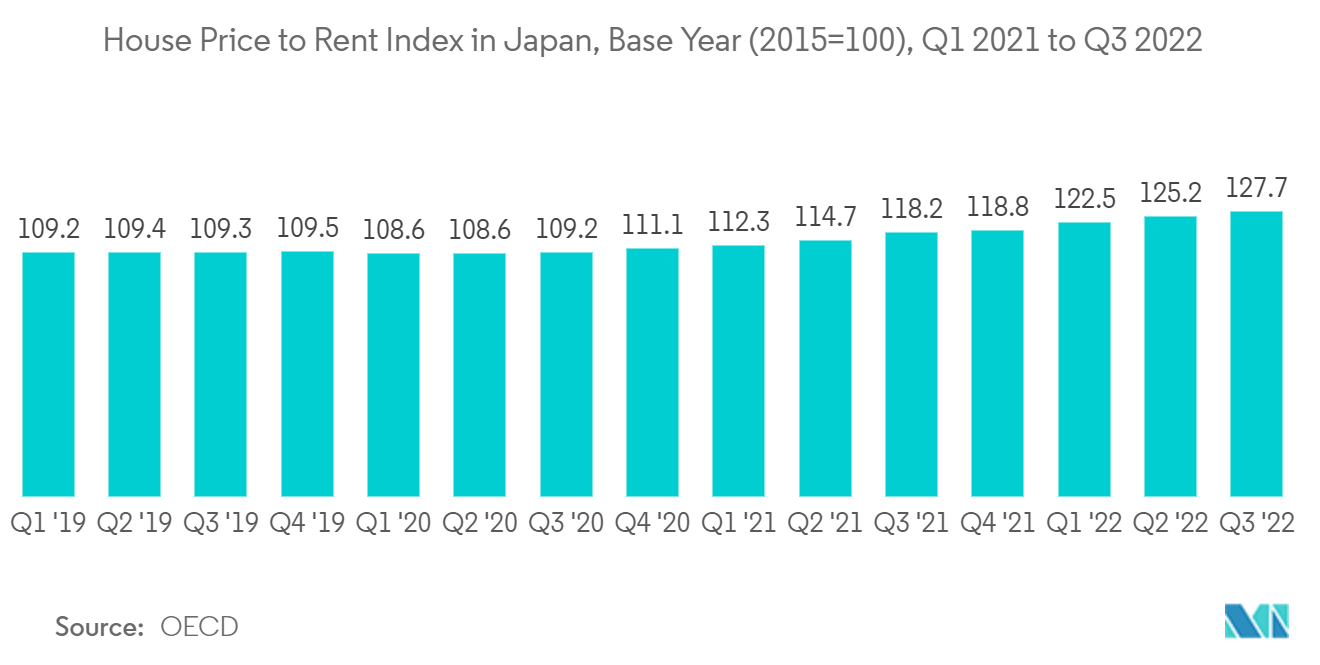Market Trends of Japan Condominiums and Apartments Industry
This section covers the major market trends shaping the Japan Condominiums & Apartments Market according to our research experts:
Japan’s Shrinking Population is Producing a Surplus of Housing
Japan's aging population is one of its main issues. According to the National Institute of Population and Social Security Research, Japan's population will more than halve over the course of the next 50 years, from 126.8 million in 2017 to just 50.56 million in 2115. By 2060, roughly 40% of the population will also be over 65.
A surplus of homes is already being produced as a result of the declining population. Homes that have been abandoned are frequently seen throughout Tokyo. According to MLIT, there are currently an estimated 8.49 million empty dwellings in the nation, which makes up approximately 14% of all residential units and is an increase of more than 24% from a decade ago.
By 2033, there will likely be more than 20 million abandoned dwellings. According to a recent report, the confluence of a dwindling population, plummeting land values, inconsistent registration records, and a tax structure unsuited to the current scenario has left ownership unknown on an estimated 4.1 million hectares, an area greater than Taiwan.

Moderate Rental Yields and Steady Rents
The return gained on the purchase price of a rental property, before taxes, vacancy expenses, and other costs, ranges from 3.4% to 5.4% in Tokyo's central districts. With smaller units, the yields are a little higher. The smallest flats have yields of 5.42%, which is a respectable yield. However, given that smaller flats typically require more care, a larger yield is justifiable.
Rents are generally consistent. The average mid-market asking rent in Tokyo's 23 wards (23W) was JPY 3,963 (USD 34.70) per square meter in Q4 2021, up 0.9% from the previous quarter but down 0.9% from a year earlier. Similar to this, mid-market rentals in Tokyo's central five wards (C5W) grew 1.1% quarter over quarter in Q4 2021 to an average of JPY 4,713 (USD 41.30) per square meter but dropped by 1.4% year-over-year.
During the same time frame, rentals in the south increased by 0.5% year-over-year to an average of JPY 4,104 (USD 35.90) per square meter but had decreased by 0.8% the previous year. Rents in the Inner North rose by 0.8% q-o-q to JPY 4,095 (USD 35.85) per square meter but also had a 1% annual correction. The average rent in the Inner East decreased by 1.2% annually and 0.5% quarterly to JPY 3,868 (USD 33.90) per square meter. The average rent in the West was JPY 3,737 (USD 32.70) per square meter, a rise of 0.8% quarterly and 0.3% annually. The average rent in the Outer North increased somewhat by 0.4% q-o-q to JPY 3,440 (USD 30.10) per sq. m., but it decreased by 1.1% year-over-year. The average rent in the Outer East was JPY 3,256 (USD 28.50) per square meter, up 2.3% year-over-year but down 0.9% on a quarterly basis.

